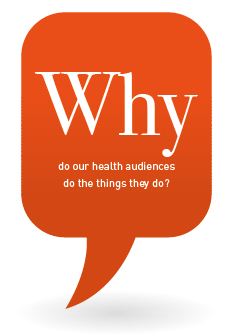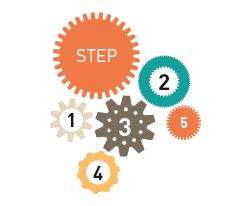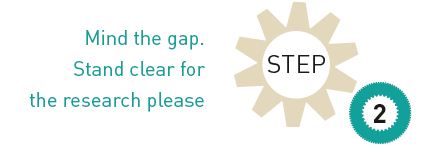Adherence: Behaviour explained by evidence

Hamell discusses the complex nature of adherence and how a 360 degree approach to behaviour change—accounting for physician, patient and environmental factors driving adherence— is fundamental to successful programmes.
It is a truth universally acknowledged, that non-adherence is common and difficult to change. Large sums of money are invested in programmes and interventions to improve patient adherence but with limited success; a systematic review of adherence-promoting interventions painted a disappointing picture of how few interventions made a real impact on non-adherence, and how short-lived that impact was1. It seemed that the more complex the intervention, the greater the chance that some aspect of it would increase adherence – at least for a while.
Technology offers exciting and imaginative opportunities to increase adherence and now almost every adherence programme includes some combination of email, SMS, website or app, providing access to information, alerts to remember to take medication, motivational prompts (based on principles of health psychology), and other behavioural triggers drawn from behavioural economics. So the opportunities to maintain active contact with patients as they learn to manage a new medication or remain motivated to use a long-term treatment are now almost limitless but are we any more successful in changing patient behaviour? Some early evaluations of adherence interventions based on new technology have been mixed and slightly underwhelming. Why should that be?
Our observation, is that the reasons patients are non-adherent are often assumed, and generally poorly understood. It is now well-accepted in academic circles that patients are non-adherent for one of three reasons:
1. They can't use their medication as prescribed, being unable to access medication through the packaging; unable to understand the regimen; or having a daily routine that makes it impossible to accommodate the special instructions or timings for their medication
2. They forget or miss doses
3. They make reasoned, logical decisions about how to take their medication that may not concur with medical advice but make absolute sense to them
Of course, in some patients non-adherence is the result of a combination of more than one of these reasons. In research we have conducted, we found in patients who were non-adherent: 8% of patients were non-adherent because they forgot or missed doses, 47% were non-adherent because they had made their own decisions about how to use medication and in 20% non-adherence was the result of a combination of forgetting / missing doses and deciding to use the medication other than as prescribed2.
"...the reasons patients are non-adherent are often assumed, and generally poorly understood."
It is relatively easy to address the first two barriers to adherence. Having identified that 47% of patients with rheumatoid arthritis affecting their hands had potentially compromised adherence because the arthritis in their hands meant they could not open the child-proof medicine bottles or push tables out of blister packs, we tested and identified a packaging design that could be easily used by all patients with impaired hand function3. Similarly, phone or electronic diary alerts can be successfully used to remind patients to take their medication. The more difficult task is in changing the non-adherence that results from patients' logical, reasoned decisions.
Traditionally, the approach has been to provide information, under the assumption that patients are non-adherent because they do not know or do not understand what they need to do and why. Certainly, knowing and understanding are essential but it is what patients know, what information they remember and how they interpret it, and how patients understand what it means for them that is key and where many, possibly incorrect, assumptions are made. For example, doctors often seek to reassure patients that their symptoms are 'mild', 'nothing to worry about', or 'in the early stages' at the same time as ordering blood tests, x-rays and scans4. Far from being reassured, patients either interpret this information as confirmation that they have a serious disease that the doctor does not want to address with them (why else would he make reassuring noises whilst ordering special investigations?), or are extremely concerned that the severity of symptoms which they are experiencing is called mild – how will they endure moderate or severe disease?5
We know that simply knowing the information is not enough to change behaviour, after all, the rates of non-adherence are just as high amongst doctors as amongst the general population, and it is increasingly accepted that non-adherence is not a rational behaviour when viewed from the standpoint of medical science and care, so why do we persist in assuming that giving patients information that we as healthcare professionals or manufacturers think is important will change behaviour?
In order to change adherence behaviour in a meaningful, sustained way, we need to thoroughly understand all the factors that drive that behaviour. This means we need to consider more than the psychological drivers, or the principles of behavioural economics; we need a clear understanding of all the internal, personal and external environmental factors responsible for non-adherence to each specific therapy and those drivers will not always be what we expect!
For example, one patient with ankylosing spondylitis consistently refused to adhere to his exercise regimen (necessary to prevent the bones of his spine from stiffening and fusing together) on the grounds that he thought he had been misdiagnosed. He was convinced he was suffering from gout, having read information and talked to his relatives!6 In research we conducted to find the drivers of non-adherence in osteoporosis, we discovered that one of the significant factors driving non-adherence to bisphosphonates was the fear of becoming addicted to them 7- an impossibility!
Another reason adherence programmes and interventions fail to change patients' behaviour may be because most target the patient exclusively without considering how patients interact with those around them (healthcare professionals, friends, family, other patients) and how the beliefs, attitudes, expectations and behaviours of these individuals influence patient behaviour. We know that doctors' beliefs about the risk of dependence and tolerance to pain medication reinforce similar beliefs in patients, resulting in under-use of pain medication and poor pain control8. We also know that many doctors do not believe that 100% adherence is necessary to achieve a therapeutic response from many treatments9. In fact, one of the greatest barriers to adherence is that it is consistently overestimated by doctors; even when they acknowledge that adherence is poor in their therapy area, it is not their patients who are non-adherent. How often do doctors seriously consider non-adherence as an explanation for lack of treatment response, and would they know how to address it if they did?
The evidence suggests that interventions which successfully promote adherence, must take account of all the factors driving non-adherence behaviour, and must acknowledge that adherence is not just about the patient. To ensure our adherence programmes are truly effective – and that the efficacy is sustained – we need a 3600 approach both to understanding what drives non-adherence and to designing interventions to change behaviour.
References
1. Haynes RB, Montague P, Oliver T, McKibbon KA, Brouwers MC, Kanani R. Interventions for helping patients to follow prescriptions for medications. The Cochrane Database of Systematic Reviews. The Cochrane Library, Volume (Issue 2) 2001
2. Shergill B, Zoaike S, Carr AJ. Non-adherence to topical treatments for actinic keratosis. Patient Preference and Adherence 2014;8:35-41
3. Hughes RA, Carr AJ, Carr M, Walsh M. Improving patient safety: reducing medication errors through the use of acceptable, accessible medicines packaging. The Pharmaceutical Journal 2008;280(7484):22-25
4. McDonald IG, Daly J, Jelinek VM, Panetta F, Gutman JM. Opening Pandora's box: the unpredictability of reassurance by a normal test result. Br Med J 1996;313:329-32
5. Carr AJ, Donovan J. Why doctors and patients disagree. Br J Rheumatol 1998;37:1-6
6. Donovan J. Patient education and the consultation: the importance of lay beliefs. Annals Rheum Dis 1991;50:418-421
7. Carr AJ, Thompson PW, Cooper C. Factors affecting adherence and persistence to bisphosphonate therapy in osteoporosis: a cross-sectional study. Osteoporosis International 2006;17(11):1638-1644
8. Woolf AD, Zeidler H, Haglund U, Carr AJ Chaussade S, Cucinotta D, Veale DJ, Martin-Mola E. Musculoskeletal pain in Europe: its impact and a comparison of population and medical perceptions of treatment in eight European countries. Annals Rheum Dis 2004;63:342-7
9. Bryon M, Carr AJ. Understanding non-adherence in cystic fibrosis: the beliefs, expectations and behaviours of healthcare professionals and patients that contribute to non-adherence. Scientific abstract presented at NACF, Salt Lake City, November 2013
About the authors:
About Dr Alison Carr, Hamell's Clinical Director
An epidemiologist with an academic background in study design and analysis, Alison specialises in outcome measurement in both clinical trials and epidemiological studies. She has conducted research into factors influencing adherence to medication, the measurement and management of pain in osteoarthritis and has delivered patient preference and adherence studies and POM-to-P switch programmes in areas such as neurology, urology and dermatology. Alison is committed to explaining behaviour with robust, scientific evidence.
About Fiona Hammond, Hamell's Managing Director
Fiona has more than 20 years' experience in the healthcare communications industry, including medical education, professional relations and advertising. Fiona has hands-on experience of implementing successful marketing campaigns as a strategic planner and account director so she understands the challenges her clients face. Fiona keeps a keen commercial focus to ensure that Hamell studies always get to the heart of people's beliefs and subsequent behaviour. She never stops thinking about how to use Hamell's robust scientific evidence to help her clients improve outcomes and increase sales.
About Catherine Davis, Research Manager
With a background in psychology and medical sociology, Catherine brings a diverse skill set to her role as Research Manager at Hamell. For the past three years she has worked in healthcare research, managing complex, global studies for major pharmaceutical clients.
About Rebecca Edmunds, Head of Digital
With 14 years experience within the healthcare industry, Rebecca is a digital marketing specialist who's expertise covers both ethical and OTC. As head of digital Rebecca is responsible for ensuring that Hamell's behavioural tools and services are as robust and innovative as the research they deliver.
Closing thought: Why do we persist in assuming that giving patients information that we as healthcare professionals or manufacturers think is important will change behaviour?








